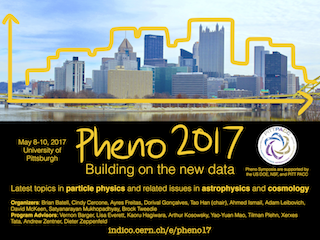Speaker
Description
We argue that the study of rare Higgs decays in the high-luminosity run at the LHC can probe axions and axion-like particles (ALPs) in a wide range of parameter space, which is otherwise inaccessible to experimental searches. If the ALP decays predominantly into photons, our strategy covers the current “gap” in the mass range between 1 MeV and 60 GeV down to photon- axion coupling as small as 10^−6/TeV. An ALP in this parameter range can explain the anomalous magnetic moment of the muon and is consistent with electroweak precisions tests and flavour constraints. In our analysis we consider the most general effective Lagrangian for a spin-0 particle protected by a shift symmetry, motivated by many extensions of the Standard Model with a spontaneously broken global symmetry.
